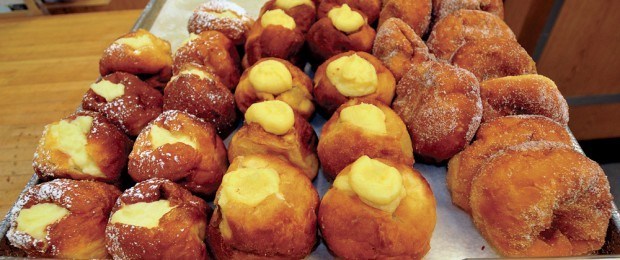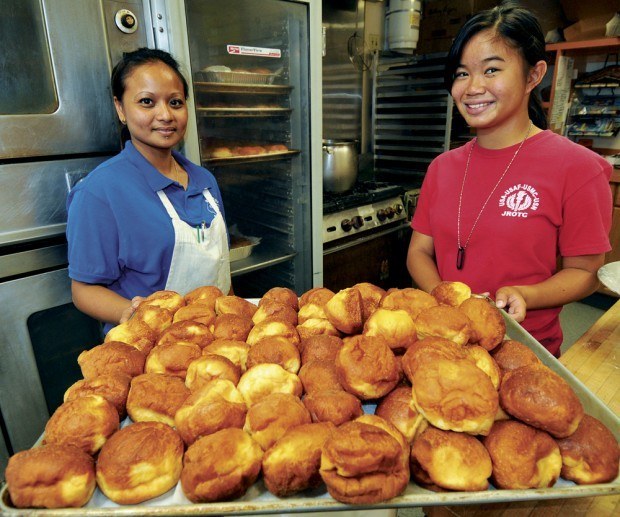LIHU‘E — While New Orleans and the nation celebrates Mardi Gras, or Fat Tuesday, here in Hawai‘i, the population celebrates the day before Lent as Malasada Tuesday, or Malasada Day, according to online sources. There are only three places on
LIHU‘E — While New Orleans and the nation celebrates Mardi Gras, or Fat Tuesday, here in Hawai‘i, the population celebrates the day before Lent as Malasada Tuesday, or Malasada Day, according to online sources.
There are only three places on Kaua‘i customers can regularly stock up on malasada, said the lead cashier at the Lawa‘i Menehune Mart.
The West Kaua‘i Methodist Church usually offers malasada only at special community events, and people craving that unique morsel based on a church member’s recipe will have to wait until the Waimea Town Celebration opens this Friday afternoon.
“We’ll open at 4 a.m. to accommodate the Malasada Tuesday customers,” said Roland Tacsiat of Kaua‘i Bakery. “We’ll have malasada all the way through until closing at 7 p.m.”
Tacsiat said this while crossing his fingers the staff at the Kukui Grove Center bakery could keep up with the demand for the confection based in Portuguese culture.
Portuguese immigrants, being predominantly Catholic, would need to use up all of the butter and sugar prior to Lent. They did this by making large batches of malasada which they would share with friends from all the other ethnic groups in the plantation camps, giving rise to the popularity of the confection.
Tacsiat said malasada is a popular item in the bakery year-round, but on Malasada Tuesday, people on their way to work, or on their way home from work, usually pick up malasada to share with co-workers over morning coffee, lunch, or snacks.
In addition to the plain sugar-coated malasada, Hawai‘i’s bakeries have developed modifications and varieties based on customer requests. Traditional malasada contain neither holes nor fillings, being made to use up all the lard and sugar in the house, luxuries forbidden from consumption during Lent.
At Kaua‘i Bakery, Tacsiat said the creme-filled malasada is the most popular outside of the plain malasada. In addition to the creme-filled, he also offers chocolate filling and a black bean filling, adapted from the Japanese An Pan, or black bean manju.
Just down the road in front of the Big Kmart store, a line formed and snaked along the storefront last year on Malasada Tuesday. That line lasted until Marlena Bunao finally ran out of dough.
Bunao, affectionately known as the Malasada Lady, offers her malasada in either plain or cinnamon sugar. There are no varieties with filling at her kiosk located just makai of the bus stop at the main entrance.
Janet, the lead cashier at the Menehune Mart in Lawa‘i said they, too, offer malasada with either plain or cinnamon sugar and extends the line with a creme-filled variety.
“Sometimes you need to wait to get the filled malasada,” Tacsiat said. “For those who can’t wait, they usually get the plain ones.”
Malasada were first made by inhabitants of Sao Miguel Island, part of the Azores using egg-sized balls of yeast dough, deep-fried in oil and coated with sugar.
These were brought to Hawai‘i in 1878 when Portuguese laborers from the Madeira and Azores arrived to work in the plantations, their traditional foods arriving with them.
• Dennis Fujimoto, photographer and staff writer, can be reached at 245-3681 (ext. 253) or dfujimoto@kauaipubco.com.



